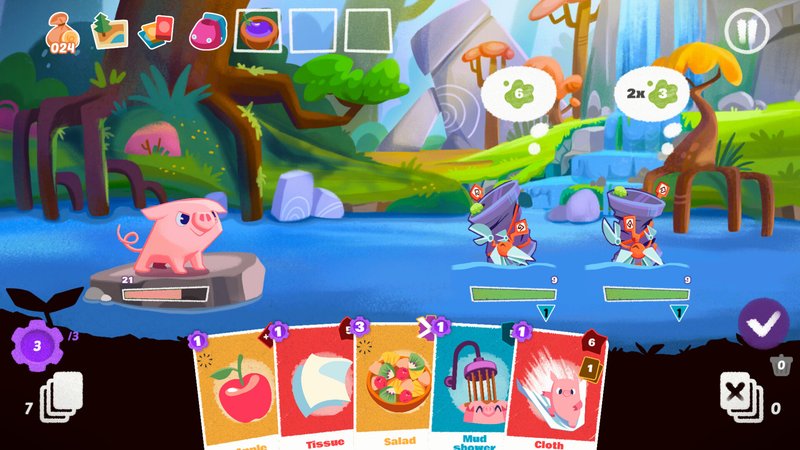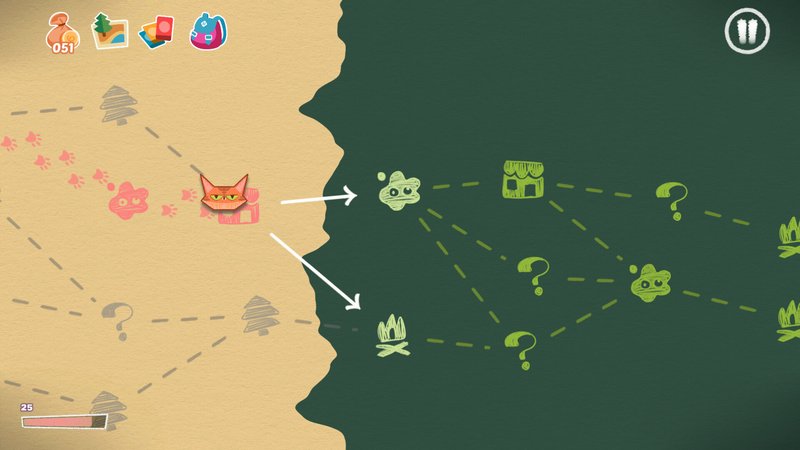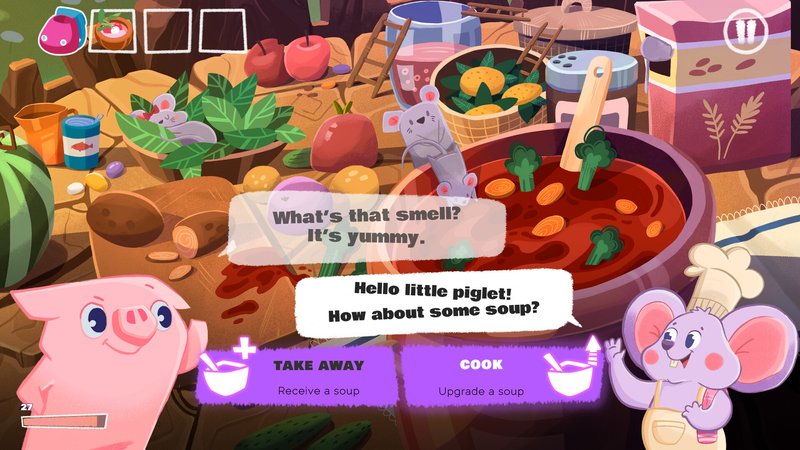Review: Nif Nif
“Nif Nif”: A Saccharine Sojourn into Deckbuilding’s Shallow End
In an era where the deckbuilding genre has reached unprecedented heights of mechanical sophistication with titles like Monster Train and Slay the Spire, it is with a mixture of curiosity and trepidation that I approached Springfox Games’ latest offering, “Nif Nif.” Marketed as a “wholesome deckbuilder about helping the forest and your animal pals,” this title positions itself as an entry point for neophytes while purportedly maintaining sufficient strategic depth for connoisseurs. A lofty ambition, indeed—one that warrants thorough examination.
Mechanical Framework: Simplicity Bordering on Simplistic
Nif Nif’s core gameplay loop adheres to established deckbuilding conventions with almost slavish devotion. Players navigate procedurally generated paths, accumulate cards, and engage in turn-based encounters where they deploy a hand of cards against anthropomorphic adversaries. The twist—if one can call it that—is the substitution of combat with “cleaning” mechanics, wherein one removes “goo” from forest creatures rather than inflicting damage.
The resource management system employs a rudimentary three-action-point economy per turn, with cards coded into a tripartite color scheme: blue for defense, red for offense (or “cleaning power,” to maintain the game’s saccharine veneer), and yellow for auxiliary effects. While functional, this framework lacks the nuanced interplay of resources one might find in more sophisticated offerings like Ascension: Chronicle of the Godslayer or Shards of Infinity.

The above image exemplifies the game’s approach to encounter design: a porcine protagonist faces crustacean adversaries in a vibrant, if somewhat juvenile, presentation. The hand displays cards with various implements—tissues, mud showers, and other cleaning paraphernalia—each with numerical values that determine their efficacy. While the presentation is undeniably polished, the underlying mechanics remain stubbornly elementary.
While taking notes with my vintage Montblanc fountain pen during a particularly uninspired encounter, I found myself yearning for the strategic tension present in even mid-tier deckbuilders. The decision space in Nif Nif rarely extends beyond the obvious play of one’s most powerful cards in a given situation—a far cry from the agonizing choices that characterize the genre’s exemplars.
Progression Systems: A Modest Ascent
Nif Nif employs a dual-character progression system, allowing players to alternate between the eponymous piglet and a feline counterpart named “Cat.” Each character possesses a discrete deck of cards and unlockable abilities, ostensibly providing variety to the experience.

The progression map, while aesthetically pleasing with its bifurcated visual design, offers little in terms of meaningful strategic pathing. The branching pathways suggest a depth of choice that the actual gameplay fails to deliver. One is reminded of Star Realms‘ elegant campaign structure, which, despite its simplicity, offered genuinely divergent strategic options that meaningfully impacted gameplay.
The inclusion of unlockable hats that modify character abilities represents a commendable attempt at meta-progression, yet these modifications rarely transcend cosmetic significance to fundamentally alter one’s strategic approach. This stands in stark contrast to the transformative relics in Griftlands or the profound character modifications available in Gordian Quest.
Auxiliary Systems: Garden Variety Diversions
Perhaps recognizing the limited appeal of its core mechanics, Nif Nif incorporates auxiliary systems in the form of gardening and cooking mini-games. These diversions, while charmingly rendered, offer minimal strategic integration with the primary deckbuilding experience.

The gardening interface presents a series of planting plots with various stages of botanical development. Players cultivate ingredients that can subsequently be utilized in the cooking system to produce buffs for future encounters. While conceptually sound, the execution lacks the depth of integration one might find in Cultist Simulator‘s interlocking systems or the elegant resource conversion mechanics of Race for the Galaxy.
The cooking system similarly suffers from a lack of meaningful strategic options. Players combine harvested ingredients to create soups that provide modest statistical bonuses—a system that feels perfunctory rather than essential to the core experience.

The dialogue accompanying these systems, as evidenced by the above image, employs a simplistic narrative approach that borders on patronizing. The exchange between Nif Nif and a mouse chef exemplifies the game’s commitment to accessibility at the expense of narrative sophistication—a trade-off that may alienate more discerning players.
Aesthetic Presentation: Saccharine Yet Polished
It would be disingenuous to deny the technical competence of Nif Nif’s visual presentation. The game employs a vibrant, cartoonish aesthetic that, while certainly targeting a younger demographic, demonstrates a consistent artistic vision. The character designs, particularly the protagonists, possess a certain charm that transcends their simplistic conception.
The environmental design, from the sun-dappled forest paths to the cozy kitchen interiors, exhibits attention to detail that belies the game’s casual aspirations. The user interface, while unimaginative in its layout, presents information with clarity and visual coherence.
The audio design, however, lacks the sophistication of its visual counterpart. The musical score, while inoffensive, fails to establish a memorable auditory identity, instead relying on generic “whimsical” compositions that fade from memory almost immediately. Sound effects similarly adhere to expected conventions without introducing innovative auditory feedback.
Strategic Depth: A Shallow Pool
Perhaps the most disappointing aspect of Nif Nif is its failure to deliver on the promise of “strategic depth for those who want a challenge.” The decision space rarely extends beyond the obvious play, with card synergies proving rudimentary at best and nonexistent at worst.
The absence of meaningful deck archetypes—a staple of sophisticated deckbuilders—is particularly noticeable. Where games like Dominion or Ascension offer distinct strategic pathways that emerge organically from card interactions, Nif Nif presents a largely linear progression of card acquisition and deployment.
The encounter design similarly lacks the strategic tension that characterizes exemplary titles in the genre. Enemy behaviors follow predictable patterns that, once identified, can be countered with minimal tactical consideration. This stands in stark contrast to the adaptive AI in Monster Train or the complex enemy behaviors in Slay the Spire that necessitate constant strategic reassessment.
Conclusion: A Modest Introduction to a Sophisticated Genre
Nif Nif positions itself as an entry point to the deckbuilding genre, and in this limited ambition, it largely succeeds. The simplified mechanics, whimsical presentation, and non-violent theme make it accessible to younger players or those unaccustomed to the genre’s typical complexity.
However, for enthusiasts seeking the strategic depth and mechanical sophistication that characterize the genre’s exemplars, Nif Nif offers little beyond a fleeting diversion. The game’s systems, while functional, lack the intricate interplay and emergent strategies that have elevated deckbuilding to its current prominence.
At a price point of $19.99, one must question whether Nif Nif offers sufficient content and depth to justify its cost, particularly when compared to genre-defining titles available at similar or lower price points. While the dual-character progression and unlockable content provide some replayability, the limited strategic options may result in diminishing returns after initial playthroughs.
In the final analysis, Nif Nif represents a competent, if unambitious, implementation of deckbuilding mechanics wrapped in a charming aesthetic package. It may serve as a gateway to more sophisticated titles for younger players or casual enthusiasts, but connoisseurs of the genre will likely find its shallow strategic pool insufficient to maintain prolonged engagement.
As I closed my leather-bound notebook after a final session with Nif Nif, carefully capping my vintage fountain pen, I couldn’t help but reflect on the missed opportunity. With its charming presentation and accessible framework, Nif Nif had the potential to introduce meaningful complexity gradually, potentially bridging the gap between casual and hardcore deckbuilding experiences. Instead, it remains content to paddle in the shallow end of the strategic pool, never venturing into the depths where the genre’s true magic resides.
Elm Whitmore, Ph.D.
Oxford University
Score
Overall Score: 5/10
Developer: Springfox Games
Release Date: Apr 1, 2025
Steam Page: Nif Nif